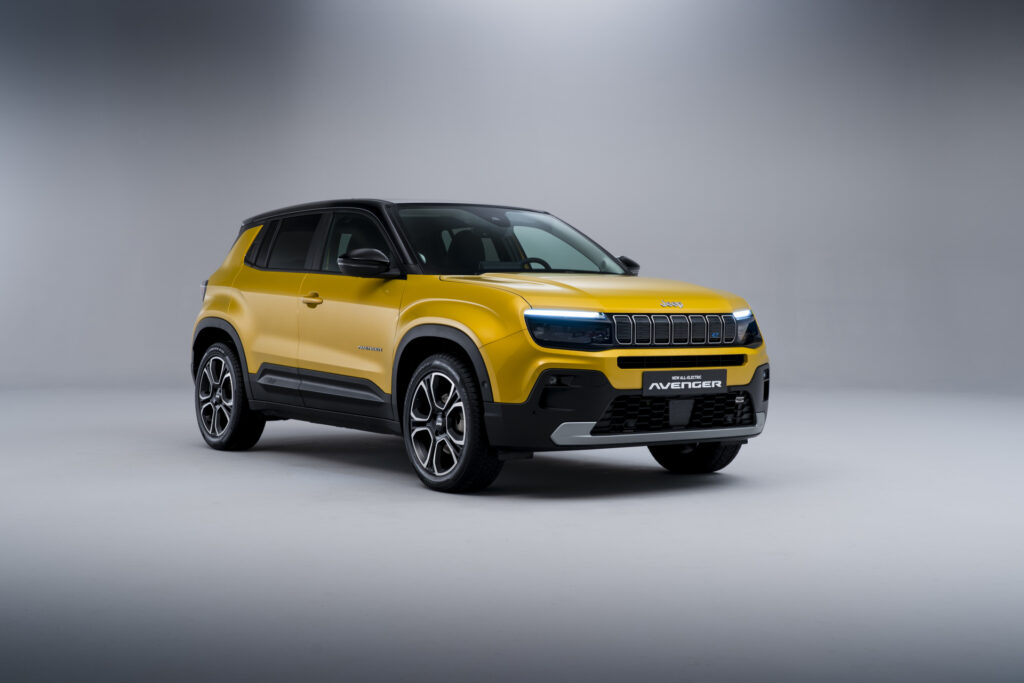Petrol holds ground as EU registrations continue recovery in April
22 May 2023

Europe’s new-car market continues to show strong signs of recovery following the COVID-19 pandemic and supply-chain disruptions. However, the automotive industry still faces an uphill struggle to return to pre-crisis levels.
Across the EU, 803,188 units were registered in April, marking a 17.2% increase year on year, according to figures from the European Automobile Manufacturers’ Association (ACEA). All but four countries saw growth, with three of the big four markets recording double-digit improvements.
Italy led the way last month, with registrations increasing 29.2%. France saw growth of 21.9%, while Germany saw its figures rise 12.6% and Spain improved by 8.2%. Hungary, Lithuania, Malta and Sweden recorded losses, of 6%, 0.9%, 14% and 6.2% respectively.
Across the first four months of 2023, passenger-car registrations grew by 17.8% to 3.5 million units. But this year-on-year improvement is set against a lower base in 2022. While production and sales were improving following the COVID-19 pandemic, the automotive industry was hit by supply shortages.
This pushed back vehicle availability, meaning a number of registrations were delayed and carried over into the later months of 2022. When compared to the last uncompromised period, April 2019, the EU new-car market declined 22.8%, highlighting the slow recovery and efforts needed to build back the market.
Yet the automotive industry is very different compared to the pre-COVID-19 era, which was already experiencing a slump following the Dieselgate scandal. With carmakers switching priorities to battery-electric vehicles (BEVs), the world experiencing a cost-of-living crisis and the economic impact of the pandemic still being felt, it could be some time, if ever, before the market recovers to the levels of its glory days.
EVs close in on petrol
While BEVs failed to take any market share from petrol models, their growth closed in on the market-leading fuel type. In April, BEV registrations increased by 51.9%, with a total of 94,561 units, totalling a market share of 11.8%, up almost 3% on April 2022.
Most EU markets recorded double- and triple-digit percentage gains, including the two largest, France (up 34.8%) and Germany (up 34.1%). This amounted to a total increase of 45.1% across the first four months of the year, with 415,579 units registered.
In the European Free Trade Association (EFTA) region, Norway again proved a case study on the adoption of BEVs. A total of 7,471 were registered in April, accounting for 83.2% of the market. In comparison, just 112 petrol and 291 diesel cars took to the country’s roads in the same month.
Hybrid-electric vehicles (HEVs) continued to grow in April, with sales up by 22.7% to 199,407 units. Despite a 4.3% growth in March, the EU market for plug-in hybrid vehicles (PHEVs) declined in April by 5.5%, with sales dropping significantly in Germany (down 45.7%).
Petrol registrations increased year on year by 17.3% with 306,757 units taking to roads around the EU. However, petrol’s market share was 38.4%, exactly the same when compared to April 2022. Diesel also posted a rise in registrations, albeit a very modest 0.03% with an extra 34 units.
Internal-combustion engine (ICE) technology continues to lead the market. Yet where it held a 94.8% share in the first quarter of 2017, according to ACEA figures (when ACEA only reported fuel-type figures quarterly), they now make up just 52.5% of registrations over the first four months of 2023. This figure is up 0.1% on the first quarter of last year, highlighting stability in the ICE sector, rather than growth.
This means that electrified vehicles, including hybrids, continue to remain on the verge of taking the dominant market share from ICE. Their performance in April alone owes much to a decline of 2.5% in diesel’s market share, while petrol remained stable year on year.
While the diesel market collapse led many buyers to consider petrol as an alternative, it now seems hybrid and BEV models are a viable option. But for BEVs to lead the industry towards a zero-emission future, they need to start taking market share from petrol models and hybrids, which remain the second-most-popular fuel type in Europe.
Challenges ahead for the industry
While Europe’s automotive market continues to enjoy perceived success, there are challenges ahead that could cause registrations figures to dip, although perhaps not to negative figures. As the supply-chain crisis softened towards the end of last year, deliveries rose, meaning further monthly figures will have a higher comparative base-rate.
Overall, the region’s automotive industry is buoyant once again. Yet the last few years have shown that, just like a house of cards, it may only take one tremor before it falls again. The current rate of recovery may be strong in comparison to recent years, but there is much to do if figures are to get back on par with pre-pandemic levels.



